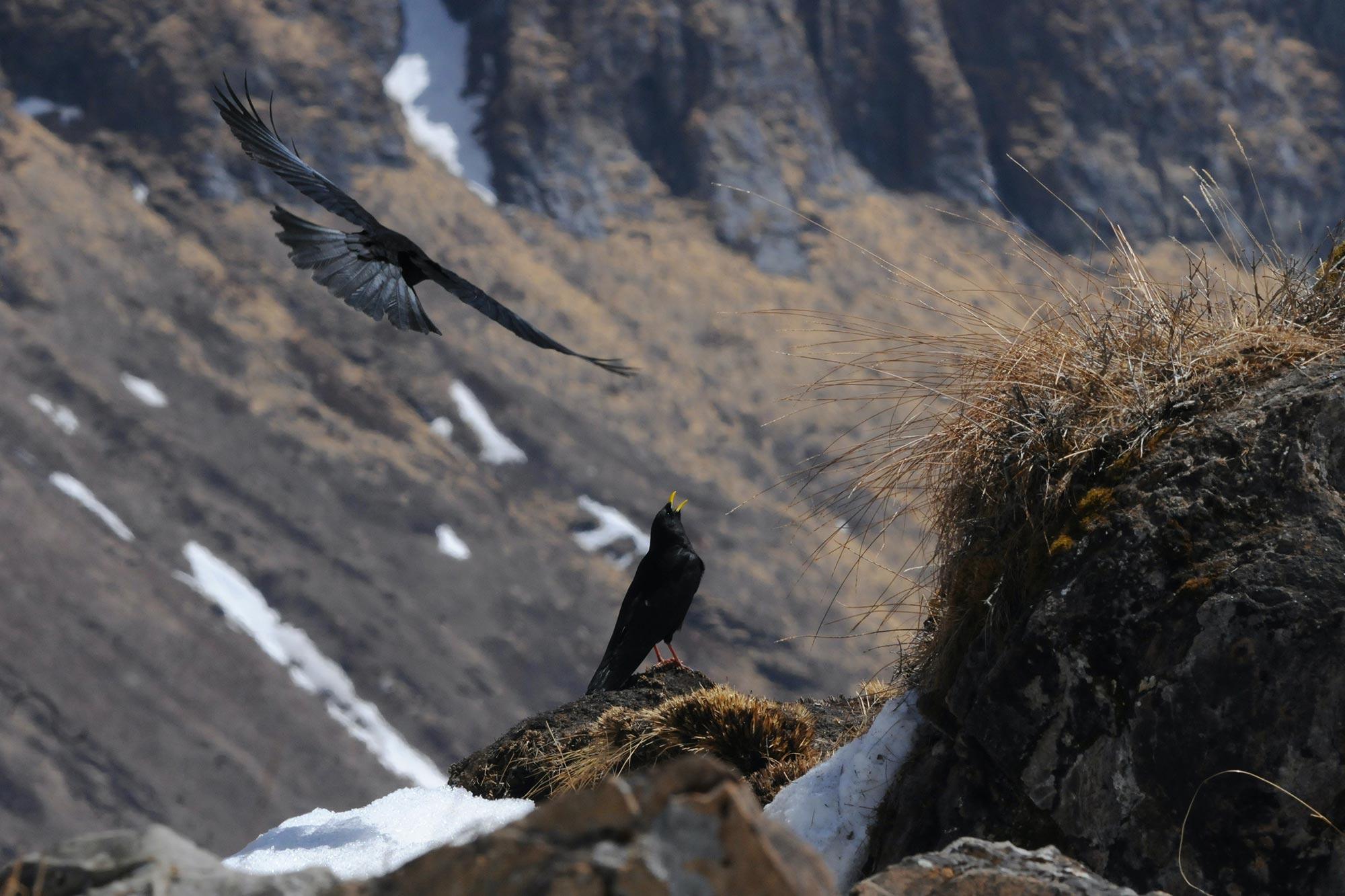Obstacles slow down birds tracking global warming

A recent study shows that, as European birds move to cooler regions to escape rising temperatures, they encounter obstacles that slow them down.
Two-thirds of Europe's birds have moved to cooler areas over the last 30 years, mainly to the north and east by 100 kilometres on average. They are trying to find the conditions they are best suited to under global warming. But these journeys come up against obstacles such as mountain ranges and oceans. This has been observed by scientists in a study recently published in the journal PNAS (*) and supported by the Swiss National Science Foundation (SNSF).
Natural barriers create real obstacles
In this study of almost all European bird species, the scientists looked at the effects of large-scale natural barriers, such as mountain ranges and coastlines, on the movements of birds over the last 30 years. They have established that these barriers affect both the distance and direction travelled by the birds. "Over the observation period, bird communities moved farther when they lived far from the coast than when they lived close by," explains Laura Bosco, a researcher at the University of Helsinki and author of the study. Coastlines therefore act as real obstacles to the movement of birds, the scientists concluded. "We already knew that the birds and entire communities weren't moving fast enough to track the climatic conditions that normally suit them. We now have part of the explanation for this phenomenon," Laura Bosco adds.
A danger for certain species
These results are important for gaining a better understanding of the possible consequences of climate change on European birdlife. Communities of birds that come up against obstacles risk having to cope with unsuitable climatic conditions without being able to move to more suitable areas. At least some of the species concerned could therefore be threatened with extinction. "Coastal birdlife is often made up of rare and unique species," Bosco warns. In Switzerland, alpine birds, including species such as the white-winged snowfinch (Montifringilla nivalis), the rock ptarmigan (Lagopus muta) and the water pipit (Anthus spinoletta), which are well-adapted to alpine habitats, could face similar problems due to altitudinal gradients. These birds prefer to stay in the alpine conditions with which they are familiar and could, for example, find themselves blocked by having to face lower altitudes to cross valleys.
Spotlight on European birdlife
The researchers came to these conclusions with the help of the Swiss Ornithological Institute in Sempach: their findings are based on data from the European Breeding Bird Atlases of the 1980s (data collected between 1981 and 1989) and 2010s (data collected between 2013 and 2017), to which the Institute contributed. These atlases cover the whole of the European continent and include almost all European bird species.
Research stay abroad
This project was made possible by a Postdoc.Mobility fellowship from the SNSF. Postdoc.Mobility is aimed at researchers with a doctorate who hope to pursue a scientific or academic career in Switzerland. During their research stay abroad, they can deepen their knowledge, become scientifically more independent and enhance their research profile.
Links
- Image for editorial use (JPEG). Caption: As birds move to cooler areas to escape global warming, they encounter obstacles that slow them down. © Aleksi Lehikoinen
- The project on the SNSF Data Portal
- SNSF Twitter feed